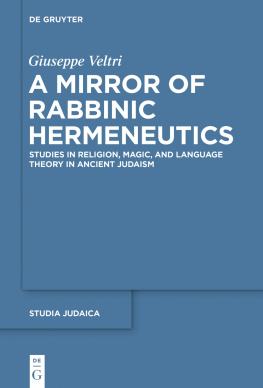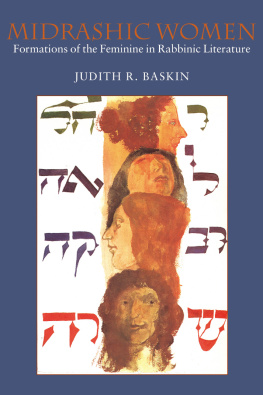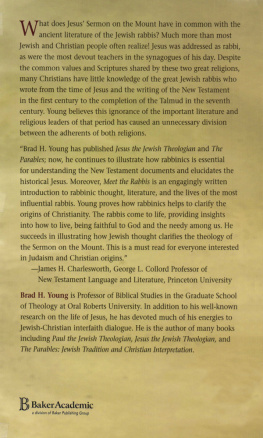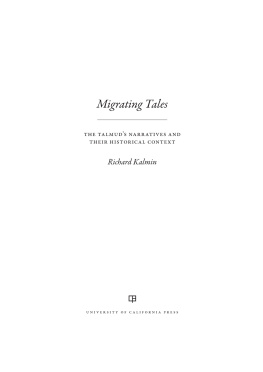Contents
Guide
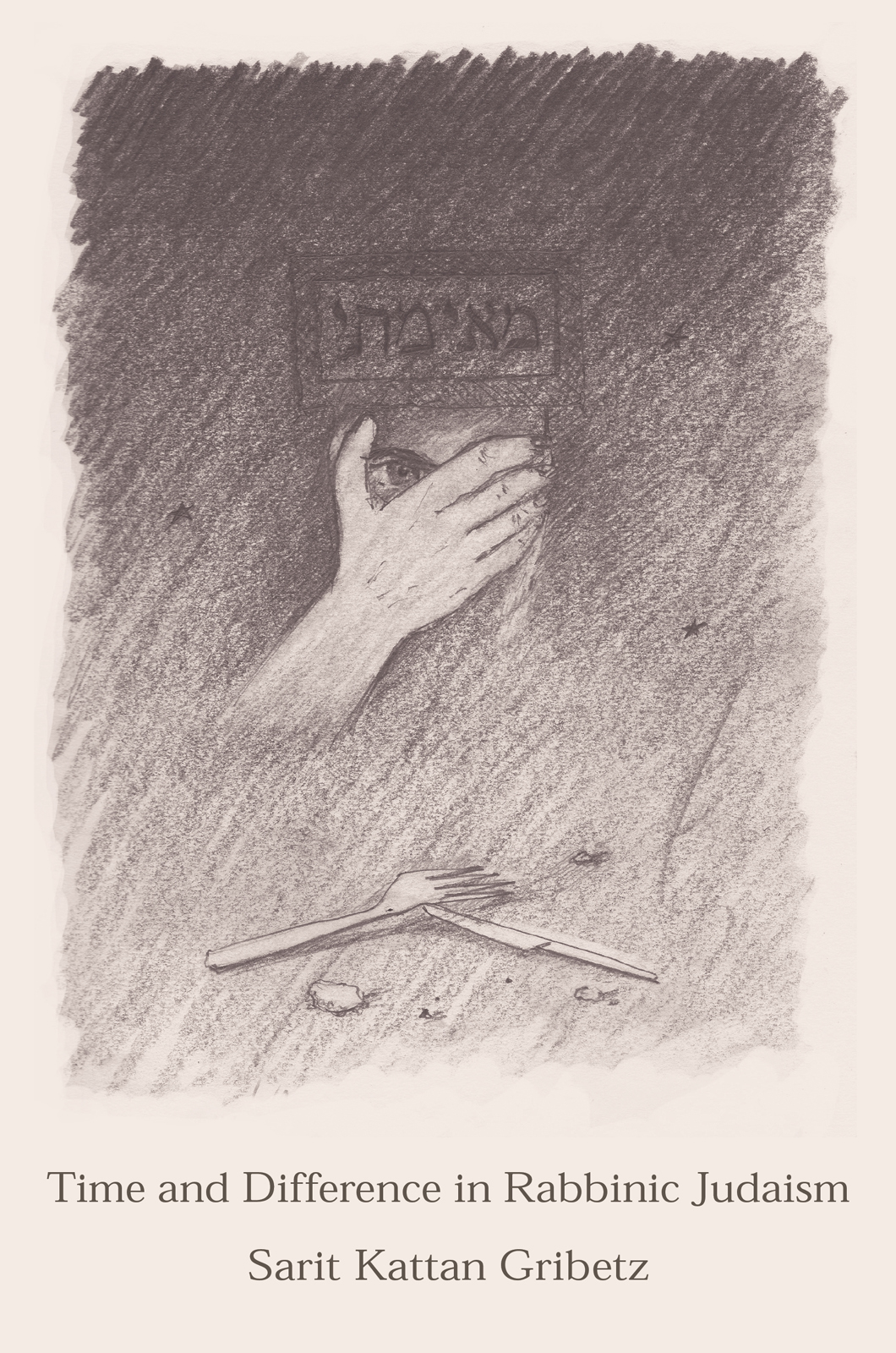
TIME AND DIFFERENCE IN RABBINIC JUDAISM
TIME AND DIFFERENCE IN
Rabbinic Judaism

Sarit Kattan Gribetz
PRINCETON UNIVERSITY PRESS
PRINCETON & OXFORD
Copyright 2020 by Princeton University Press
Requests for permission to reproduce material from this work should be sent to
Published by Princeton University Press
41 William Street, Princeton, New Jersey 08540
6 Oxford Street, Woodstock, Oxfordshire OX20 1TR
press.princeton.edu
All Rights Reserved
Library of Congress Cataloging-in-Publication Data
Names: Kattan Gribetz, Sarit, author.
Title: Time and difference in rabbinic Judaism / Sarit Kattan Gribetz.
Description: Princeton : Princeton University Press, [2020] | Includes bibliographical references and index.
Identifiers: LCCN 2020033753 (print) | LCCN 2020033754 (ebook) | ISBN 9780691192857 (hardback) | ISBN 9780691209807 (ebook)
version 1.0
Subjects: LCSH: Time in rabbinical literature. | Rabbinical literatureHistory and criticism.
Classification: LCC BM496.9.T47 K38 2020 (print) | LCC BM496.9.T47 (ebook) | DDC 296.1dc23
LC record available at https://lccn.loc.gov/2020033753
LC ebook record available at https://lccn.loc.gov/2020033754
British Library Cataloging-in-Publication Data is available
Editorial: Fred Appel & Jenny Tan
Production Editorial: Ali Parrington
Jacket/Cover Design: Layla Mac Rory
Jacket art: Jacqueline Nicholls, Brachot 2 (2012)
For Jonathan, Daniela, Sophie, and Max
CONTENTS
ix
1
CHAPTER 1
Rabbinic and Roman Time
35
CHAPTER 2
Jewish and Christian Time
92
CHAPTER 3
Mens and Womens Time
135
CHAPTER 4
Human and Divine Time
188
CONCLUSION:
Temporal Legacies: What Difference Does Time Make?
228
PROLOGUE
I RECENTLY DEVOTED A DAY to renewing my passports. Early in the morning, I took the subway to midtown Manhattan for my appointment at the Swiss Consulate. It was important for me to arrive on time; otherwise I would have missed the twenty-minute slot I had scheduled months in advance. When I entered the pristine and peacefully quiet office, a clerk greeted me by name and helped me immediately. The appointment lasted precisely twenty minutes, and I was told that the passport would be delivered to my home in exactly two weeks time. The machine used to generate passport photos and other biometric data looked as though it belonged to the distant future. I barely had time to notice the state-of-the-art design of the space, the modern paintings on the walls, and the beautiful views before I headed out.
My next stop was the Israeli Consulate, two blocks away. I hadnt made an appointment because there are no appointments to be made; one can arrive at any time during their working hours, whenever one pleases. After I passed through numerous rounds of security and x-ray machines, I entered the office, which was already filled with dozens of people, some standing and many others sitting in the waiting area. Before I had time to take a number, I heard a young man yelling at the clerk behind the counter: The passport will only be mailed in three weeks? The website says that passports are returned in two weeks, and now I came for nothing, as my trip is two and a half weeks away. Bizbazt et ha-zman sheli! Youve wasted my time! While I waited and waited in the chaotic roomtelevisions blaring, families chatting boisterouslyfor my number to be called, I noticed that the place had not been renovated in years. Photographs from archaeological excavations hung from the walls.
The contrast between the Swiss and Israeli consulates could not be more pronounced, but I am especially amused by their different attitudes to time: appointments in advance versus spontaneous walk-ins; instant service versus long waits; certain versus uncertain time frames; uncompromising punctuality versus temporal flexibility.
These differences dont surprise me, though. I find myself in these consulates precisely because I grew up with a Swiss mother and an Iraqi Israeli father. Competing conceptions of time and temporal rhythms were a part of my childhood. I vividly remember two oft-repeated patterns. The first unfolded whenever we took a family vacation. My mother, who has an internal Swiss clock, was ready to leave for the airport hours before our scheduled departure and grew increasingly nervous that we would not arrive at the check-in desk a full three hours in advance of take-off time, as the airline recommended. My father, for whom punctuality is not particularly important, would slowly finish packing his suitcase and find other excuses to stall so that he would not have to wait unnecessarily at the gate. This would occasionally result in a missed flight, but a missed flight was usually not the end of the world because there would be another flight headed to the same destination soon enough, and my father had patience to wait for it. My second memory is from extended family gatherings, when my Swiss relatives arrived at the exact time listed on the invitation, while my Iraqi Israeli aunts and uncles interpreted the start time as a suggestion, anytime after which they were welcome to show up. The former left at the end of the meal or event, even if they had no plans to go elsewhere thereafter, as the norms of politeness dictated; the latter preferred to stay indefinitely, as the host brought out additional rounds of desserts, nuts, and fruit, and everyone continued to enjoy one anothers company, as the norms of politeness dictated.
These temporal cultures exist simultaneously in the presentneither is more advanced or modern, nor more primitive or backward, neither superior to the other. They are both contemporary. They are simply different, and they exist today for a complex set of interwoven cultural, political, economic, social, and historical reasons. Both cultures, along with their attitudes to time, are beloved to me, and I am a product of both. Within every society, various time frames and attitudes to time operate simultaneously, and they all continually intersect, not only in my family but also on a global level, mutually affecting one another.
The study that follows explores the ways in which hourly, daily, weekly, and annual times unite groups and communities as well as form distinctions between them, and how temporal rhythms change over time. Time, I argue, can create or reinforce difference, and it can also elide difference. Moreover, such a process can be variously motivated: the formulation of daily schedules and annual calendars, for example, can be consciously conceived. But the process can also be less deliberate, an unintended consequence of other activities and traditions.
I have a third passport, too. I am reminded of this on the subway ride back from the consulates as I pass the post office in the Bronx where I recently renewed my American passport. It is my experience of time here, in the United States, that has most significantly informed my interest in time as a marker of difference. Adhering to two conflicting calendars has struck me as one of the most disorienting aspects of observant Jewish life in America. Observing the Sabbath, and thus being unavailable to work (or drive, and much else) on Saturdays, kept me from pursuing acting professionally and fencing competitively when I was younger. In college, and now as a university professor, I regularly face the challenge of Jewish holidays overlapping with class meetings, rather than the luxury of my vacations corresponding with my festivals. Being an observant Jewish American entails a constant negotiation between twoor moretemporal rhythms, ones that are rarely aligned. The same is true, for example, for an observant Muslim American. In these cases, again, time accentuates difference.



